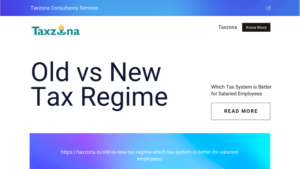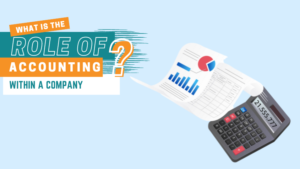What is the Reverse Charge Mechanism (RCM)?
What exactly does the GST Reverse Charge Mechanism (RCM) entail?
The Reverse Charge Mechanism (RCM) is a procedure that allows the recipient to pay the GST rather than the provider. In this instance, the beneficiary, instead of the provider, is responsible for paying the tax
The Reverse Charge Mechanism is applicable in the following situations:
- Imports
- Purchase from an unregistered dealer
- Supply of notified goods and services
The situation is now inverted since the person getting the products and services must pay the taxes. A GST must be paid on behalf of the recipient if they make purchases from unregistered sellers. The provider has to give the receiver a payment voucher. Section 2(94) of the CGST Act 2017 states that the beneficiary must be a registered person.
According to section 2(98) of the CGST Act 2017, a “Reverse-Charge” is when the receiver of a supply of goods or services or both is responsible for paying tax rather than the provider of such goods or services or both.
- Section 9 (3) or (4), or
- Section 5 of the Integrated Goods and Services Tax Act, subsections (3) and (4)
Current Situation in Reverse Charge Mechanism (RCM)
The reverse charge system for service tax is now in effect for providers of services, including insurance agents, staffing agencies, and goods transport companies. Unlike service tax, there is no such thing as a partial reverse charge. The receiver must pay 100% of the supply’s tax.
Similar to the transportation of products, the previous administration took a lot of work to collect service tax from the various unorganized sectors. An effort has been made to position the services under the current regime, and as a result, the reverse charge mechanism will boost compliance and tax revenues. Currently, What is Mixed and Composite Supply in GST? does not have a reversal charge method. Both products and services may be subject to the reverse charge.
GSTR Forms RCM Provisions - GSTR 1 - GSTR 2
The VAT regime is being continued with this arrangement. The supplier cannot claim the input tax credit if registered, yet the products or services are subject to the reverse charge mechanism since he is not charged with the tax, but the receiver is.
Taxes must be paid to the government under the reverse charge method for goods importers. In addition to the import taxes, this exists.
GSTR 1 is where the specifics of the fees for the inbound supply of goods or services must be disclosed. The GSTR 2 form contains information on inbound collection in detail.
Regardless of turnover, a person subject to taxation using the reverse charge method must register under the GST.
The input tax credit paid under the reverse charge goes to the provider of the products or services. The input tax credit may only be used to advance business, which is the sole requirement.
The following services are on the list of those covered by the reverse charge mechanism:
- Goods Transport Agency
- Recovery Agent
- Director of a company or corporate body
- An individual advocate or firm of advocates.
- An insurance agent
The Scenario in Which GST Will Allow Reverse Charge Supply by Unregistered Dealer
Supply by Unregistered Dealer
When an unregistered person sells goods or offers services to a registered person, the registered person—i.e., the receiver of the goods/services—becomes responsible for paying tax if the supply is one of the taxable supplies. No reverse charge mechanism applies to exempt stores.
The registered dealer will pay the tax, and all of the Act’sAct’s rules will apply to him as if he were the provider of the products or services. Since collecting tax from an unregistered dealer would be challenging, the idea behind this is to deter tax avoidance. It would improve transparency and encourage tax compliance. The registered dealer can claim input credit for the tax he paid via the reverse charge system.
Recommended: (How to Register GST for Small Business in India?)
The new system intends to compel registered people to buy items from registered dealers exclusively by adding additional compliance requirements under the Act.
For Services Offered by an Online Business
The receiver of services is responsible for paying tax in the case of services rendered by e-commerce operators. The representative of such an e-commerce operator will be required to pay tax if the assessee has no physical presence in the taxable region. If there isn’t one, the assessee must name a representative responsible for paying GST.
For Services
A list of services that would be subject to the reverse charge mechanism under GST has been released by CBEC.
S. No. | Provider | Recipient |
1 | Goods transport agency | Any body corporate, partnership business, society, factory, or other person registered under the CGST, SGST, or IGST Act that is a casual taxpayer |
2 | Recovery Agent | Bank, NBFC, or other kind of financial institution |
3 | a body corporate or company director | A company or a body corporate |
4 | A single advocate or a group of advocates, An arbitration panel | Any business entity |
5 | An insurance agent | Any person carrying on insurance business |
Supply of Goods Under RCM
S.No | Description of Supply of goods | Supplier of Goods | Recipient of Goods |
1. | Cashew nuts, not shelled or peeled | Agriculturist | Any registered person |
2. | Silk yarn | whoever creates silk yarn from raw silk or silk worm cocoons to supply the market with silk yarn. | Any registered person |
3. | Raw cotton | Agriculturist | Any registered person |
4. | Used vehicles, seized & confiscated goods, old and used goods, waste and scrap | a municipal authority, a state government, or the federal government | Any registered person |
Supply of Services Under RCM
S. No | Description of Supply of Service | Supplier of Goods | Recipient of Service |
1. | Any service rendered to a non-taxable online recipient by a person who is located in a non-taxable territory | Those people who live in non-taxable areas | Any resident of the taxable area aside from a non-taxable online recipient. |
2. | GTA Services | Goods Transport company (GTA) who has not made integrated tax payments at the 12% rate
| Any factory, society, cooperative society, registered person, body corporate, partnership firm, casual taxable person; located in the taxable territory |
3. | Legal Services by advocate | An individual
Advocate including
a seasoned attorney or legal team | Any company operating within the taxable area |
4. | Services provided to a business entity by an arbitral tribunal | An arbitral tribunal | Any company operating inside the taxable area |
5. | Services offered to any corporation or partnership through sponsorship | Any person | Any corporation or partnership that is based in the taxable area |
6. | Services provided to a business entity by the Central Government, a State Government, a Union territory, or a local authority, excluding: (1) the rental of real estate; (2) the services listed below. Aside from the Central Government, State Governments, Union Territories, or local authorities, the Department of Posts can provide the following services: (i) speed post, express parcel post, life insurance, agency services, (ii) services in relation to an aircraft or a vessel, inside or outside the precincts of a port or an airport, and (iii) transport of goods or passengers. | Central Government, State Government, Union territory or local authority | Any business entity located in the taxable territory |
7. | Services provided to the said company or body corporate by a director of the said company or body corporate | A director of a company or a body corporate | The company or a body corporate located in the taxable territory |
8. | Services provided by an insurance agent to anyone conducting business in the insurance industry | An insurance agent | Any individual conducting insurance business within the taxable area |
9. | Services provided to a banking company, financial institution, or non-banking financial company by a recovery agent | A recovery agent | a company engaged in banking, finance, or another type of financial activity and based in the taxable area |
10. | Services provided from a location outside of India up to the customs station of clearance in India by a person who is located in a nontaxable territory using a vessel to transport goods | A person located in non-taxable territory | Located in the taxable territory and an importer as defined in section 2 of the Customs Act of 1962 (52 of 1962), clause (26) |
11. | providing services to a publisher, music label, producer, or the like in exchange for transferring or allowing the use or enjoyment of a copyright covered by section 13(1)(a) of the Copyright Act of 1957 relating to original literary, dramatic, musical, or artistic works | Author or music composer, photograph her, artist, | Publisher, music company, producer or the like, located in the taxable territory |
12. | Members of the Overseeing Committee providing services to the Reserve Bank of India | Members of the Oversight Committee established by the Reserve Bank of India | Reserve Bank of India. |
Points to be noted:
Under GST, no partial reverse charge will be allowed. The recipient pays 100% of the tax if the reverse charge mechanism is used.
- The receiver of the services will be responsible for paying the tax in the event of B2B import of other benefits.
- The receiver of the products is responsible for paying the tax in the event of B2B import of goods.
Liability of Registration Under RCM (Reverse Charge Mechanism)
Who is required to register under the Reverse Charge Mechanism for the new tax system?
- No matter the threshold, anyone who pays taxes through reverse charge must register under GST, and the annual threshold limit is 20 lakhs.
Note: States were free to increase the registration threshold from the previous INR 20 lakh to INR 40 lakh at the GST Council meeting.
Time of Supply
Time of supply, as used in the GST, refers to the specific moment at which the goods or services are provided or performed. It lets us learn the tax rate, value, and return filing deadlines. Under the Reverse Charge Mechanism, the recipient is required to pay GST. However, the delivery period for supplies made under a reverse charge differs from those made under a forwarding fee.
How do you Find Out the Time of Supply under Reverse Charge Mechanism (RCM)?
In the case of Goods: When supplying goods, the tax is due under the reverse charge at the time of supply, whichever is earlier than the dates listed below:
- the date of the receipt of goods;
- the date of payment as recorded in the recipient’s books of account;
- whichever is earlier, the date on which the payment is debited from his bank account;
- the date thirty days after the date of issue of the invoice or any other document, by whatever name called, by the supplier in lieu thereof by the supplier
Note: The date of entry in the recipient’s books of accounts will be regarded as the time of supply if it is impossible to determine the time of collection in the above mentioned cases.
Let me explain with an example: -
- Date of Payment – June 18, 2019
- Date of Invoice – July 1, 2019
- Date of Entry in books by the recipient – June 19, 2019
In this situation, the supply date will be June 18th, 2019.
The time of collection will be the earliest of: “When the amount is paid, i.e., the date of payment,” if the supplier is located outside of India.
OR
“When the receiver enters the money into his accounting books.”
In the case of services: The earliest of the following dates is the time of supply for services when taxes are due under the reverse charge mechanism:
- The date of payment; or
- The date immediately follows after sixty days from the date of issue of the invoice by the supplier, whichever is earlier.
The date of entry in the recipient’s books of accounts will be used as the time of supply if it is impossible to determine the time of collection in the scenarios mentioned earlier.
Let me explain this using an example: –
- Date of Payment – August 18, 2019
- Date of Invoice – September 1, 2019
- Date of Entry in books by the recipient – August 19, 2019
Note: The time of supply in this instance will be August 18, 2017, but if for some reason that time can’t be determined under one or two headings, it will be August 19, which is the date that the recipient entered the supply into their books.
The legislation mentions two different reverse charge possibilities. The nature of the supply and the provider’s character will determine the first one. Sections 5 (3) of the IGST Act and Section 9 (3) of the CGST/SGST (UTGST) Act both apply to this. To a registered person, the unregistered person made a second taxable supply that was covered by sections 5 (4) of the IGST Act and 9 (4) of the CGST/SGST (UTGST) Act.
Method of GST Payment Under Reverse Charge Mechanism
ITC may only be utilized to pay output tax, according to section 49(4) of the CGST Act of 2017. As a result, tax under reverse charge may only be paid in cash without receiving an ITC. The supplier must indicate if reverse charge tax is applicable on his tax invoice.
Input Tax Credit:
The service beneficiary may claim an input tax credit for taxes paid on products and services due to reverse charging. The sole requirement is to use the products and services for a company or business expansion.
The dealer cannot claim tax reimbursement if the composite dealer is subject to the reverse charge mechanism. The tax will not be paid at composition rates but at regularly applicable rates.
Reverse Charge Mechanism (RCM) Registration Requirement:
Section 24 of the CGST Act of 2017 mandates that anybody using the RCM to pay taxes must compel registration, regardless of whether their turnover is above or below the threshold.
GST Applicability GST:
Compensation Cess Taxes paid through the reverse charge technique will also be subject to the compensation cess. The intention is to compensate for the States’States’ revenue losses due to adopting the GST. Following the implementation of GST, this will be applicable for five years.
Essential Points to Consider When Using RCM
- A person registered under GST must provide the goods and services notified under sections 9(3) or 9(4).
- Under the reverse charge mechanism, the government must receive the applicable GST on the twentieth month.
- According to the GST paid, the input tax credit will be available for all RCM products and services used to advance business. Additionally, the person who is paying the reverse charge and procuring the service can benefit from an input tax credit.
- Details of the GST paid under the RCM will not automatically populate in GSTR 2; instead, they must be manually provided.
- Wherever the RCM is applicable, the recipient must arrange the invoice themselves, and the invoices and consolidated purchases must be issued daily. On all GST-eligible individuals who fall under section 31
- The recipient is required to issue a payment voucher at the time the supplier is paid.
- The reverse charge payment to the authority is not eligible for the ITC.
- Individuals registered for the composition scheme are also subject to the reverse charge so that no RCM credit can be obtained.
- Advance payments are also subject to the reverse charge mechanism.
Note: If a dealer is not registered with the GST, he is not permitted to engage in interstate business. Only intra-state transactions are allowed for any reverse charge mechanism to be applicable.
Conclusion:
The Reverse Charge Mechanism, which will be used in the most significant tax overhaul, is a familiar idea since the Service Tax already uses it. But enforcing a 100% reverse charge is undoubtedly a considerable adjustment.
Although there are advantages and disadvantages to this reverse charge process, it is presently impossible to predict how its implementation will affect society. Small supply recipients will undoubtedly be burdened by it, but on the other hand, it will improve tax compliance for the whole nation and boost transparency.










